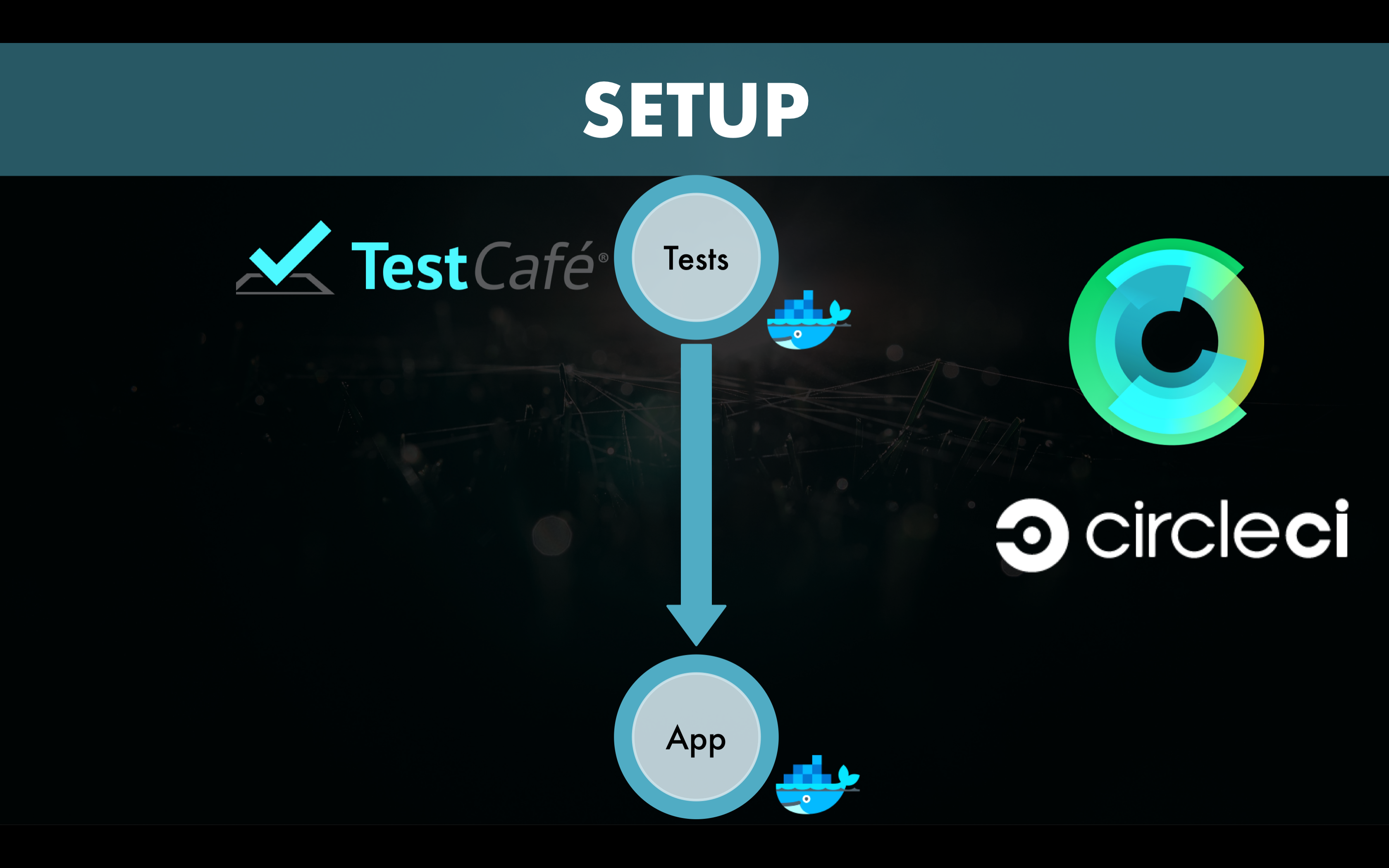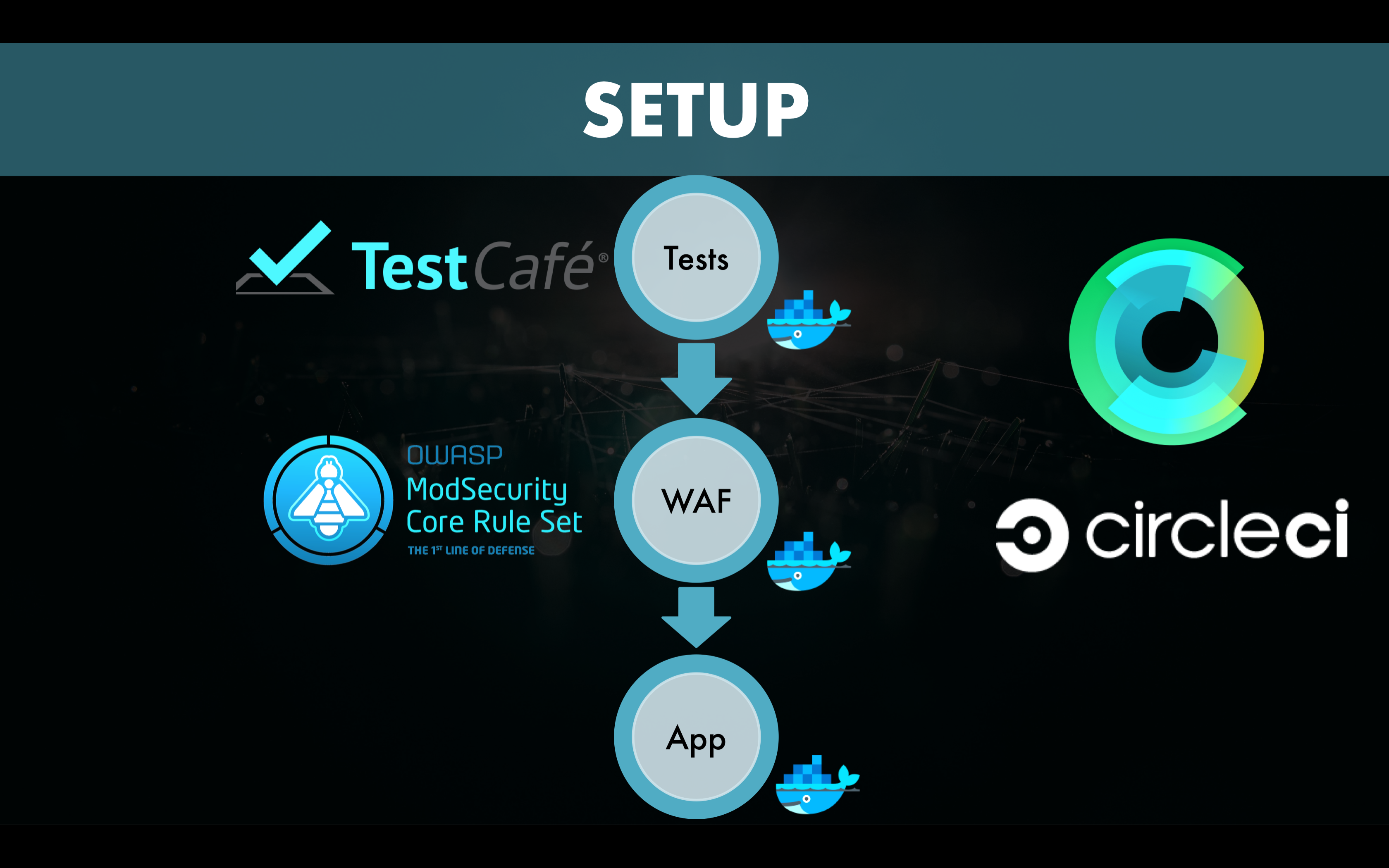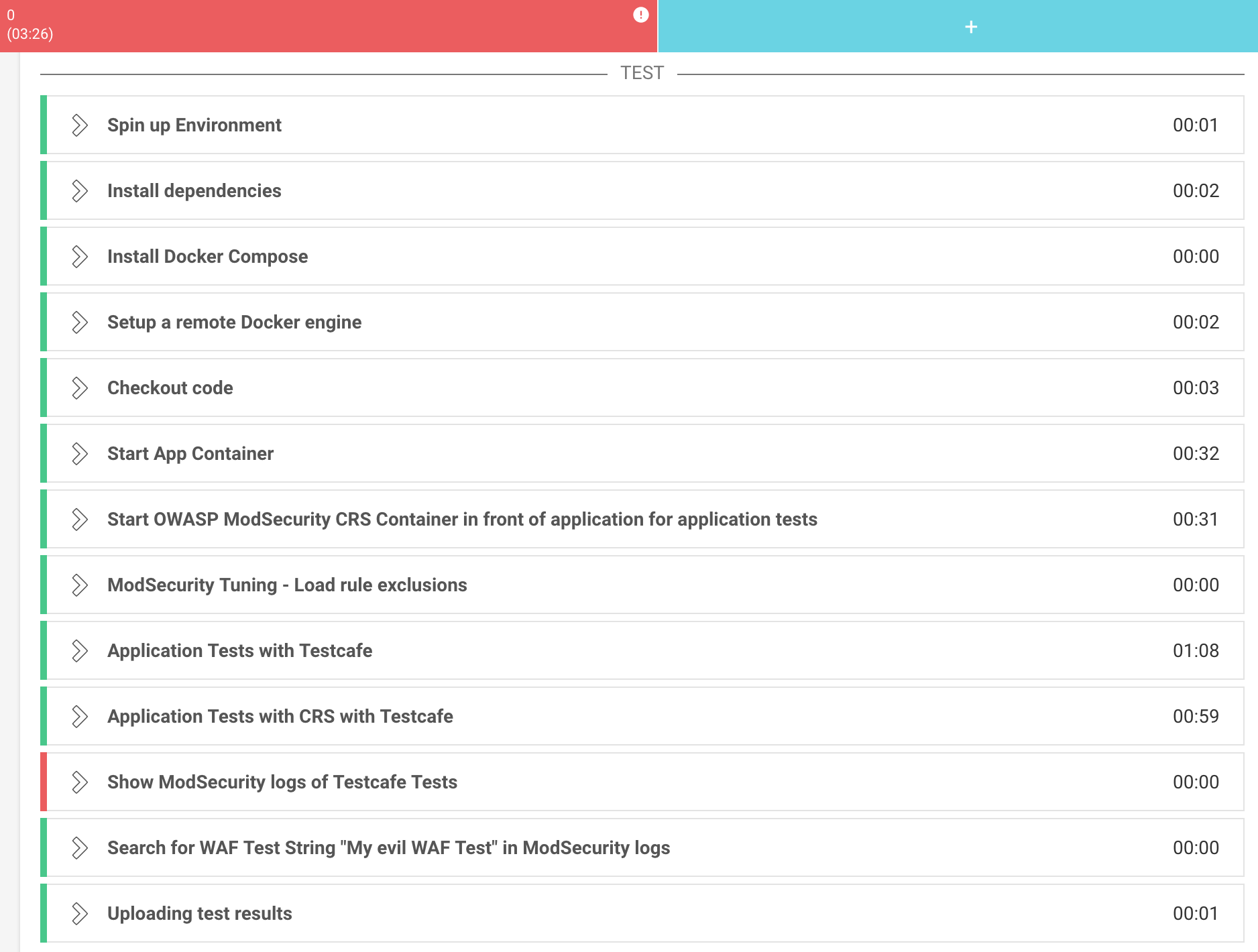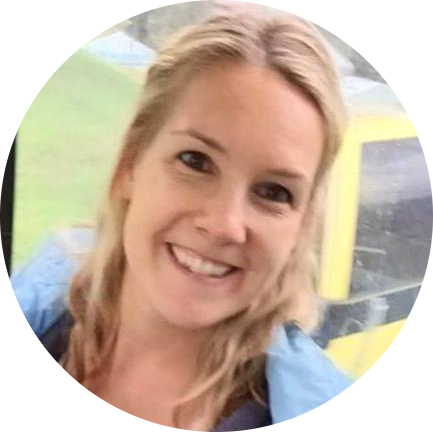A Web Application Firewall (WAF) raises concerns that it does not fit into the DevOps methodology. The problem is that when a WAF is added to production, the impact on the application is tested too late. The application developer gets extremely late feedback and the WAF could break the application. This can lead to production issues.
But what if a WAF is involved in the DevOps process very early on and not just at the end, at production?
The whole DevOps process only makes sense when all components are part of it! A service can only be successfully complemented by a WAF if the WAF is part of the pipeline from the beginning. I will show how to integrate a WAF, specifically ModSecurity with the Core Rule Set, and its testing into continuous integration.
My three main goals are:
- To spread the word about the Core Rule Set (CRS)
- To take the fear of WAFs
- To get WAFs involved in DevOps
Problem
Despite the fact that the number of false positives has been massively reduced in CRS3, there is still the possibility that legitimate traffic from a legitimate user might trigger a CRS rule. This means the user receives a 403 - Forbidden message and can’t use the application. She gets blocked.
This problem is even worse in a DevOps culture. Everything is fully automated and well-tested and in the end, we add a WAF to production and kill the whole positive experience: When production issues arise, it is often too late to find and correct the problems. Instead, an operator is likely to disable the WAF and never re-enable it again. This is because operators have a lot of other work to do and security is not always the top priority.
Solution
The solution is to insert the WAF / CRS very early in the DevOps process and give the developers and operators early feedback:
- If we automate application tests, we must add the CRS to these tests. All tests have to succeed first without, then with the CRS! Additionally, no CRS rule should be triggered by the tests.
- Each commit of the application code into the repository triggers a continuous integration run. This launches the application, starts the WAF and runs the application tests.
We are thus testing an application with the CRS after every commit of the code. - We always want to have the application in a deployable and runnable state with the CRS.
This way, we know that our current app version’s traffic is not blocked by the CRS. - We guarantee this by testing the application and the CRS in a production-like environment. There can always be false positives. We can remove them by tuning the rules via the configuration.
If we have to perform these adjustments to the CRS, we already have our configuration for production because we tested it in a production-like environment. - The application should not go to release until it is fully tested with the CRS!
An application whose legitimate traffic triggers a rule should not go into production until the error is fixed either. With every false positive, we need to decide if it is something we can fix in the application, or if the CRS needs to be tuned.
This way, the application’s traffic is tested with the CRS and we don’t have to fear production issues later on.
CRS Docker Container
As you can read here, it only takes a few steps to install the Core Rule Set. And it gets even easier if you use it in a Docker Container.
I have created a Docker Image that inherits from the official OWASP ModSecurity Core Rule Set Container (https://hub.docker.com/r/owasp/modsecurity-crs/). My image adds an Apache reverse proxy configuration. The reverse proxy configuration is used to put the CRS in front of an application. It also adds some more CRS variables. The CRS container can be found at https://hub.docker.com/r/franbuehler/modsecurity-crs-rp/. This way, the CRS can be very quickly and easily integrated into automated tests.
A special feature of my Docker Container is that it returns the UNIQUE_ID of a blocked request in the 403.html error page. I plan to match this UNIQUE_ID with the application tests in the future.
Here is how to run the container:
docker run -dt --name apachecrsrp -e PARANOIA=1 \
-e ANOMALYIN=5 -e ANOMALYOUT=4 -e BACKEND=http://172.17.0.1:8000 \
-e PORT=8001 --expose 8001 franbuehler/modsecurity-crs-rp
The following environment variables are configurable:
PARANOIA: paranoia_levelANOMALYIN: inbound_anomaly_score_thresholdANOMALYOUT: outbound_anomaly_score_thresholdBACKEND: IP address and TCP port of application backendPORT: listening TCP port of Apache, this port must also be exposed:--expose
Explanations of the individual parameters can be found in the main CRS configuration file crs-setup.conf (current version: https://github.com/coreruleset/coreruleset/blob/v3.0/master/crs-setup.conf.example) or as part of the tutorial series about ModSecurity and CRS at netnea.
Proof of Concept Setup
I have implemented a proof of concept in CircleCI. Of course, the continuous integration can also be implemented on TravisCI, Jenkins, and so on. Then I used TestCafe to write the application tests. It’s a Node.js tool for performing end-to-end tests.
In the basic setup, we have application tests that are performed against the application. Naturally, these application tests should succeed:

As a next step, we put CRS in front of the same application in order to funnel the same tests through the WAF. We expect the application tests to still succeed and the log to remain empty. This would confirm that no CRS rule were triggered by the tests.

Each of these components runs in a separate Docker container.
The time taken to pull and start the Core Rule Set container and to run the application tests are only a small part (approx. 1 minute and 30 seconds in this PoC) of the overall testing process (approx. 3 minutes and 30 seconds in my example).
The message here is: We do not waste a lot of time but get a lot of extra security.

CI Configuration
In summary, the CircleCI configuration .circleci/config.yml consists of the following steps:
# .circleci/config.yml
version: 2
jobs:
build:
docker:
- image: circleci/node:9.11.1-stretch
steps:
-run:
name: Install dependencies
...
-run
name: Install Docker Compose
...
-setup_remote_docker
-checkout
-run:
name: Start App Container
...
-run:
name: Start OWASP ModSecurity CRS Container in front of application for application tests
#http://172.17.0.2:8001
#we set inbound and outbound anomaly score to 1, no tolerance
command: |
docker pull franbuehler/modsecurity-crs-rp && \
docker run -dt --name apachecrstc -e PARANOIA=2 -e \
ANOMALYIN=1 -e ANOMALYOUT=1 -e BACKEND=http://172.17.0.1:8000 \
-e PORT=8001 --expose 8001 franbuehler/modsecurity-crs-rp
-run:
name: ModSecurity Tuning - Load rule exclusions
command: |
printf '# Rule 942450 (msg: SQL Hex Encoding Identified) triggers,\n' > tmp.conf
printf '# because of random characters in the session cookie.\n' >> tmp.conf
printf '\nSecRuleUpdateTargetById 942450 "!REQUEST_COOKIES:session"\n' >> tmp.conf
# CRS container for application tests:
docker cp tmp.conf apachecrstc:/etc/httpd/modsecurity.d/owasp-crs/rules/RESPONSE-999-EXCLUSION-RULES-AFTER-CRS.conf;
docker exec apachecrstc /usr/sbin/httpd -k graceful
- run:
name: Application Tests with Testcafe
command: |
# https://circleci.com/docs/2.0/building-docker-images/#mounting-folders
# creating dummy container which will hold a volume with config
docker create -v /tests --name configs alpine:latest /bin/true
# copying config file into this volume
docker cp /home/circleci/project/testcafe/tests/test.js configs:/tests
# starting application container using this volume
docker pull testcafe/testcafe
docker run --volumes-from configs:rw --name testcafe -it testcafe/testcafe 'chromium:headless --no-sandbox' /tests/test.js
- run:
name: Application Tests with CRS with Testcafe
command: |
docker cp /home/circleci/project/testcafe/tests/testcrs.js configs:/tests
docker run --volumes-from configs:rw --name testcafecrs -it testcafe/testcafe 'chromium:headless --no-sandbox' /tests/testcrs.js
- run:
# Fail if ModSecurity log is not empty
name: Show ModSecurity logs of Testcafe Tests
...
- run:
# Fail if ModSecurity log does not contain WAF Test String "My evil WAF Test"
# '<script>alert("My evil WAF Test")</script>'
name: Search for WAF Test String "My evil WAF Test" in ModSecurity logs
...
For all details see:
https://github.com/DevSlop/pixi-crs/blob/master/.circleci/config.yml
Let’s go through the steps and take a closer look:
Step “Spin up Environment”
First, we have to tell CircleCI which image to use for the primary Docker Container. That is where all of the following steps are performed.
Steps “Install dependencies”, “Install Docker Compose” and “setup_remote_docker”
Then we want CircleCI to install some dependencies, docker-compose and docker.
Step “checkout”
The configuration .circleci/config.yml is in the root of the application repository. And in step ‘checkout’, CircleCI checks out the application code, where the .circleci/config.yml resides.
Step “Start App Container”
In the next step, we start the application in a container.
Step “Start OWASP ModSecurity CRS Container in front of application for application tests”
Then we start our CRS container in front of the application we have just started above.
Step “ModSecurity Tuning - Load rule exclusions”
In this step, we have the ability to tune the ModSecurity / CRS setup. We exclude certain rules or we hide certain parameters from the set of over 150 rules to avoid false positives and to keep the logfile empty.
Step “Application Tests with Testcafe”
Here, we perform the application tests against the TCP port of the application container. We do this to be sure that the application and the application tests are working. We want to distinguish failed application tests caused by the application itself from false positives introduced by CRS.
Step “Application Tests with CRS with Testcafe”
We repeat the application tests, but this time via the WAF / CRS. This is done by pointing the tests against the TCP port of the CRS container. Of course, these tests must be successful, too. In addition to the existing application tests, we add a WAF test to be sure that the CRS really triggers: We send an Cross Site Scripting (XSS) payload to a search form and expect the CRS to block the attack.
Step “Show ModSecurity logs of Testcafe Tests”
In the end, we check the results: The ModSecurity log should be empty. This means that no CRS rule was triggered by the standard application tests.
Step “Search for WAF Test String “My evil WAF Test” in ModSecurity logs
We also test that our intentionally added XSS string appears in the log. If it does not appear, either the tests have been aborted or the CRS did not work properly and we should look into this.
In the image above, we see a problem that should be resolved before the application can be released. The message here is: If and when every step is successful and the application works behind the CRS, then the application can go into production!
Recommendations for Production
This PoC covers the continuous integration part. But of course, it could be extended to an entire deployment pipeline.
To do all this in production, I recommend the following:
- The more tests you write, the better!
But at least test your login process. I often see false positives in cookies and cookie names in production, if, for example, special characters or random strings are used.
Click through your entire application. Testing all GET and POST arguments covers a broad part of the application. I also often see problems there.
The broader the tests are, the better the chance to get all possible false positives caused by the application’s legitimate traffic. - Perform your tests during continuous integration with a very low inbound and outbound anomaly threshold.
We want to see and alert every false positive. - If there are false positives in production (lack of tests?), then write a test for every issue discovered this way. This makes sure the false positives goes away.
- Each new feature of the application should be covered by a test. Of course, this should always be the case, but it’s even more important with CRS in place.
- You will probably have to adapt the CRS Docker container to fit into your organization. My Docker container is an example of how it could be done (Think about adding SSL/TLS for example).
Take the CI pipeline and the Docker container of this PoC and customize it for your organization. This PoC is meant to give you free samples of how to implement a pipeline with a WAF in it.
Future work
- I plan to implement this pipeline on other continuous integration platforms, such as Jenkins, TravisCI, GitLab CI, and so forth to spread its use.
- As mentioned earlier, the CRS container already returns the UNIQUE_ID of a blocked request in the 403.html error page. I plan to match this UNIQUE_ID to the application test.
Presentation and slides
I gave a presentation at the DevOpsDays ZH, the Open Cloud Day in Zurich, the Open Security Summit in England and the DevOps Meetup Bern where I explain this whole idea. The slides can be found at https://www.slideshare.net/franbuehler and the video from the DevOpsDays ZH can be found at https://vimeo.com/271451246.
References
The backend application I tested in this PoC is the Pixi application from the OWASP project DevSlop, where I am also a part of the team.
The OWASP DevSlop project consists of several modules, all aimed at either presenting proof-of-concept DevSecOps pipelines, or insecure implementations of DevOps to teach better practices.
http://devslop.co
https://owasp.org/www-project-devslop/
The CircleCI configuration can be found on GitHub. Please take this example and customize it for your organization.
https://github.com/DevSlop/pixi-crs/blob/master/.circleci/config.yml
My CRS Docker image can be found at:
https://hub.docker.com/r/franbuehler/modsecurity-crs-rp/
Source:
https://github.com/franbuehler/modsecurity-crs-rp
One of the triggers of the idea behind this blog post is the book ‘Securing DevOps’ by Julien Vehent:
https://www.manning.com/books/securing-devops.
Of course, every CRS user knows the ModSecurity Guides from Christian Folini. They provide the basic knowledge to understand the concepts and inner working of CRS and ModSecurity: https://netnea.com/apache-tutorials.
Thanks Christian Folini for proofreading my blog post!
 Franziska Buehler
Franziska Buehler